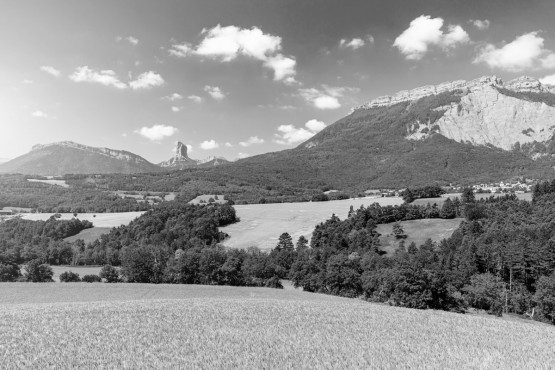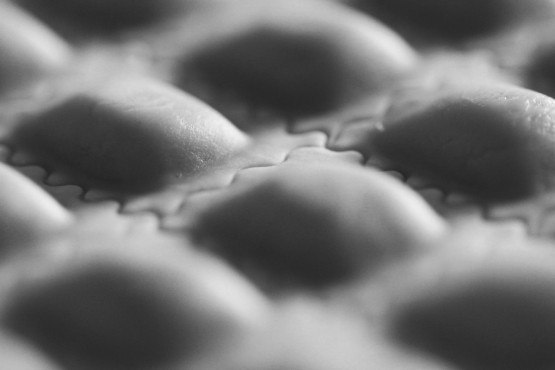
Our history
A FRENCH TRADITION?
Yes, absolutely!Italy is often regarded as the home of pasta, but history proves that France is also a land that created its own fresh pasta. To learn more about this, we need to go back to the origins of pasta, and more specifically to the Perso-Roman wars, during which fresh pasta was established. It was originally developed in the Mediterranean regions of historical Mesopotamia.
In the Middle Ages, the wholesome dish of fresh pasta spread as far as Provence and Savoie, due to these areas' geographical proximity to the Mediterranean. The French took inspiration from Roman recipes when cooking this fresh pasta. This was the case, for example, with rissoles; pasta filled with stuffing and then fried. But they gradually incorporated their culinary heritage: butter and milk. These ingredients make France a 'pasta-loving' country in its own right, as evidenced by the establishment of the first pasta workshops in Paris.
By the 13th century, the pasta-making craft was well and truly established in France and new manufacturing techniques were being developed. Contrastingly, the preferred cooking method for pasta became as part of a bouillon, traditionally with chicken. The term rissoles evolved into 'ravioles' and the dish became much-loved at royal courts, thanks to its delicate flavour and rich stuffing. A wide variety of preparations are used, even going as far as to mix flour, potatoes and herbs, stripping them of their doughy coating to finally form what would later be known as quenelles.
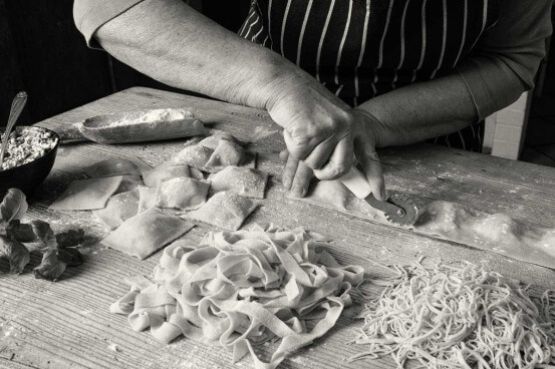
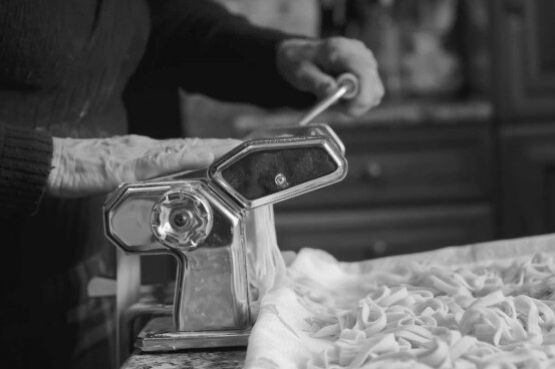
FRANCE
a historic land of fresh pastaOver the centuries, French gastronomic inventiveness has enriched stuffing recipes, giving France its right to be known as a home of fresh pasta... the French way!
In the 15th century, pasta-making became a profession in its own right in France, and pasta factories sprang up all over the country, but especially in the south-east, where pasta consumption and love for pasta were higher than elsewhere. Artisanal production has also adapted to French tastes, offering a texture that is more melt-in-the-mouth than in Italy. Specific recipes celebrate a culinary heritage that is perhaps more noble than that of its Italian neighbour.
And so it was that in the 18th century a recipe was created that showcases a certain refinement that is entirely French: Raviole du Dauphiné. So what is its main feature? The dough is made exclusively from soft wheat flour, which is much softer and finer, resulting in a light, melt-in-the-mouth product with a cheese and parsley filling in the centre, then of course browned in butter, in keeping with French gastronomy.
The recipe quickly caught on and gradually developed. The majority of its production was in the Dauphiné region, and more specifically in Romans: a town renowned for the meticulous skills of its craftsmen, who would later make their mark in the manufacture of luxury items such as shoes.
In the 19th century, ravioles became a speciality in the Drôme and Isère regions, and a worthy heir to throne in the unique art of French pastry. At Saint Jean, we've been making this speciality pasta for over 80 years, celebrating the region's heritage.
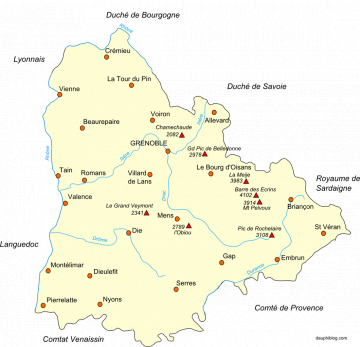
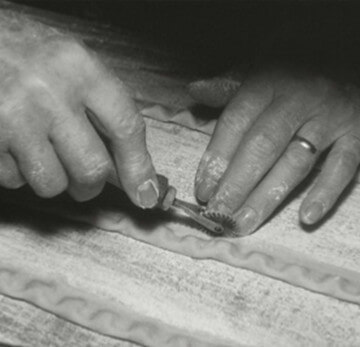
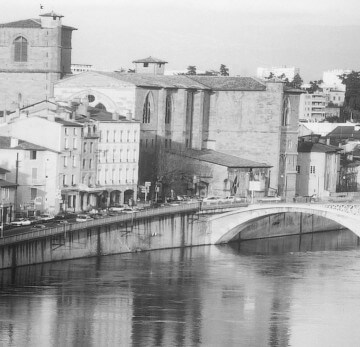
A FORTUITOUS MEETING A TWO MEN
The story behind Saint Jean is all about the happy convergence of two men: Emile Truchet, who had the ingenious idea of mechanising the production of ravioles, and the grandson of a ravioles maker, are the holders of the original recipe for genuine ravioles.
So it all began in Romans, where Emile Truchet, a restaurant owner, served his customers homemade ravioles, a much-loved but time-consuming dish. He was interested in mechanising the production of his ravioles; not only to produce them faster, but above all, to laminate the dough as finely as possible. The idea was to give the ravioles an extra degree of refinement that was impossible to achieve by hand, given the fragility of the dough. In 1935, he invented his own machine: the raviolatrice.
The development of this machine marked a turning point in the art of making ravioles, as it not only perfected it, but also considerably increased the amount they were consumed. But to win over as many people as possible, it was essential to use the unique recipe for genuine ravioles! This is where the original recipe creator comes in.
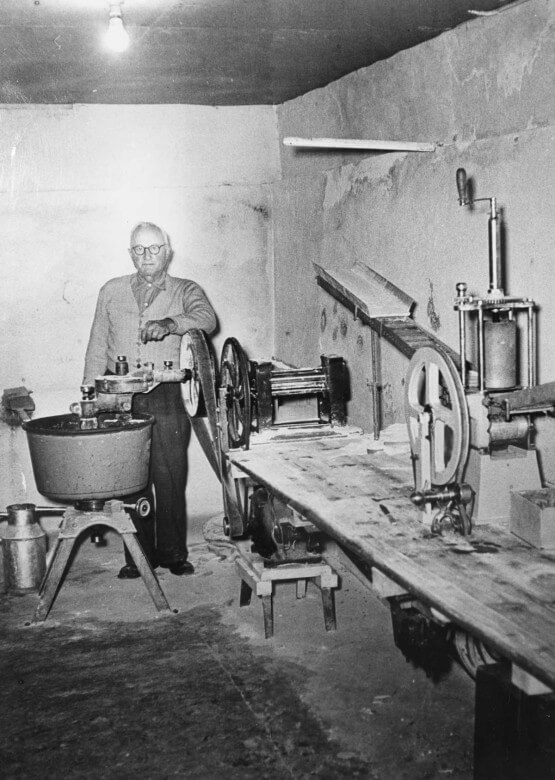
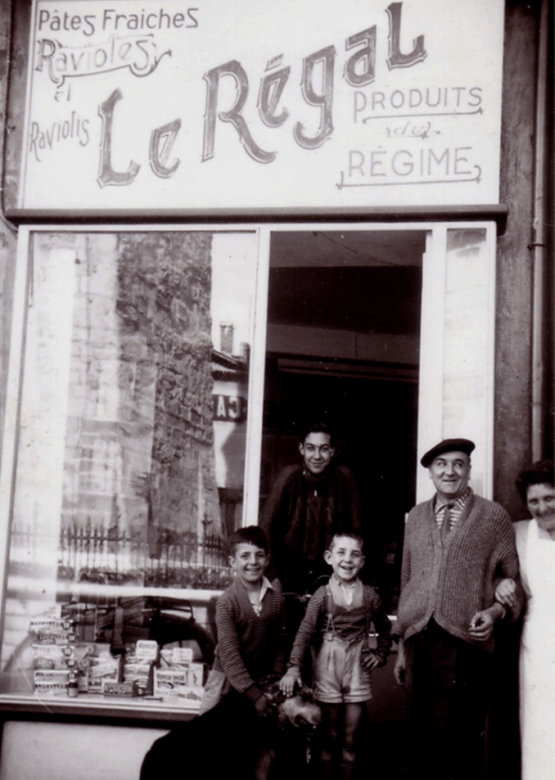
He was born in Saint-Jean-en-Royans, a small village at the foot of the Vercors Massif, into a farming family whose mother and grandmother were 'ravioleuses': women who were experts in the art of making ravioles. To understand their role, we need to go back in time to the 19th century, when the pasta-making industry really became ingrained in French culinary practice. Most of the villages in the Royans region have their own ravioles makers, because making ravioles requires meticulously selected local ingredients and a real skill.
Ravioles was therefore a familiar dish for this man, who still used his grandmother's recipe. A recipe unlike any other: a hint of green because it has slightly more parsley. A true gourmet, he then had the idea of improving this recipe with even more flavour by adding Comté, a noble cheese matured for several months, which he chose himself from the dairy farms in the neighbouring Jura region.
He owned his own retail business and loved ravioles, so he wanted to offer them in his shop. But he soon realised that only a machine would enable him to reproduce the precision of the ravioles makers' handiwork and produce ravioles of the utmost finesse! He then remembered the famous raviolatrice made by Emile Truchet, a man he had met a few years earlier at the big fair in Romans.
He enlisted the help of craftsmen in Romans, who specialised in the precision tools used to make luxury products, and had the machine reproduced so it could prepare a dough of incomparable finesse, doing justice to his grandmother's original recipe. It's this fine taste that creates an explosion of the flavour of the stuffing in your mouth, as well as that distinctive green colour, visible after cooking. After a number of meticulous tests and adjustments, he launched his first production runs: Saint Jean ravioles were born!
